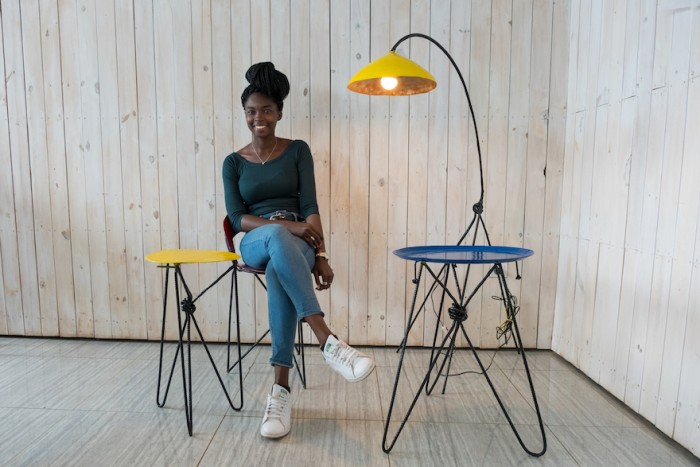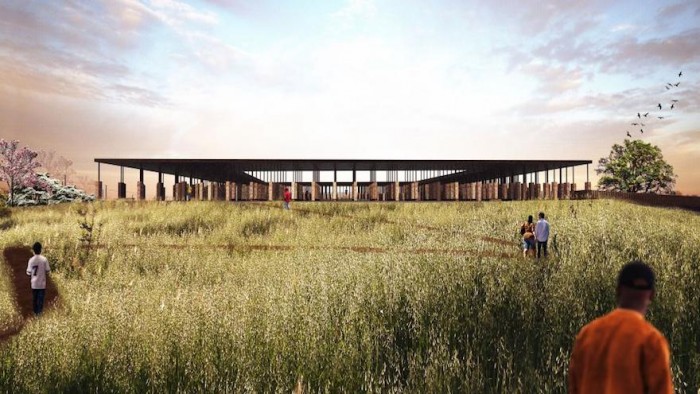It was while studying architecture at the University of Virginia in the US that Yemi Kacoutie decided it was time to move back home and work on the continent. Although she had considered staying on in the US following her studies, a strong desire to return home to Ivory Coast eventually led her back.
Now, a fellow at the African Design Centre (ADC) in the capital city of Rwanda, Kigali, Kacoutie is not only involved in a project to build a school but she has also learned more about product design.
ADC was started by the world’s largest non-profit architectural firm, MASS Design Group, in September 2016. The aim is to offer an intensive 20-month fellowship that acts as a complement to traditional architecture and design school education.
They take in recent graduates with a Bachelor’s Degree in a design-related field like Architecture, Landscape Architecture, Urbanism, Engineering, and Industrial Design.
The fellowship combines training that builds technical skills in software, design, construction, and professional practice, with humanities workshops focused on storytelling, history, social justice, international development, and leadership.
For Kacoutie, coming to Kigali was a chance to immerse herself in the world of building design and work with other fellows who come from different African countries including Kenya, South Sudan, Uganda, South Africa, Ghana and Malawi.

Their time together at ADC is set to culminate in the design and construction of a school in Musanze, northwest of Rwanda. Kacoutie says that they are exposed to all kinds of design work – one focuses on a project’s built aspect, another on research and another on craft.
Kacoutie herself recently finished her time in the craft rotation, during which she produced an intriguing set of furniture using metals and enamel. Colourful and sturdy, the set’s focal point is the large metal knot visible in each piece.
Called an ‘ipfundo’ in Kinyarwanda, Kacoutie became enamoured with the idea of creating these knots. Once she had settled upon metal as a material, she set about learning how to work with the material. Though she describes it as a lengthy, tedious process, the young architect discovered that by melting strands of rebar in charcoal, she was able to knot them and make them three dimensional.
Much of what Kacoutie has learned during her time at the ADC, she says, she learned from interacting with the fellows. “Even just technical skills. Of course, we had workshops and things where we learned a great deal but working next to people on a day to day basis and asking, ‘How do you do this? Teach me how to do this thing that you’re so good at?’ – that’s been such a valuable part of this.”
Something that is at the centre of MASS’ design philosophy – and consequently the ADC’s – is a decidedly human approach to the work. Architects don’t just design buildings, they also influence the impact these buildings have on the humans who occupy them. This philosophy and prioritisation of the needs of the people who eventually occupy their structures is something all the fellows strive to keep in mind, says Kacoutie.
One of the buildings that MASS is working on is the The Memorial to Peace and Justice in Montgomery in the US (above). The structure, which is still in progress, will contain the names of over 4000 lynching victims engraved on concrete columns representing each county in the US where racial terror lynchings happened.
When architect Christian Benimana, co-founder of ADC, spoke at Design Indaba Conference last year, he said that they wanted to nurture a creative leadership that will take on the massive challenges that the continent is facing with the fellowship.
“My biggest takeaway from my time at the ADC is that though human centred design is hard, it’s completely necessary,” Kacoutie says. “It’s something that most architecture firms don’t think about and I feel like it's something that must be introduced especially in the context of Africa being developing. We need to start having our own models for development, rather than looking to Europe. I guess I’m realising more than ever that we have to start now and it's time for our generation to start making these changes.”
Main images of Yemi by photographer Earl Abrahams.










